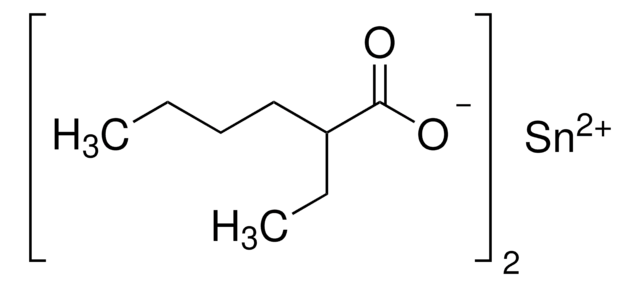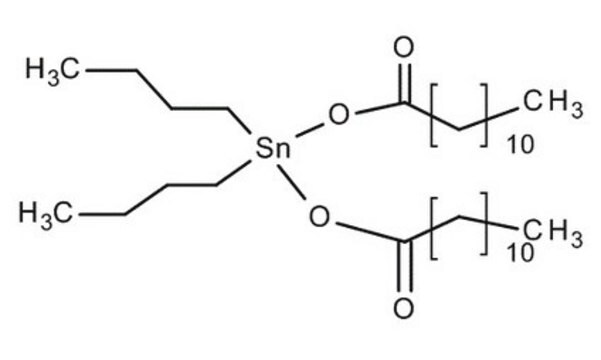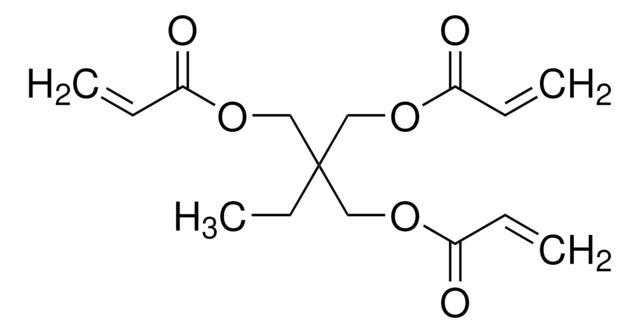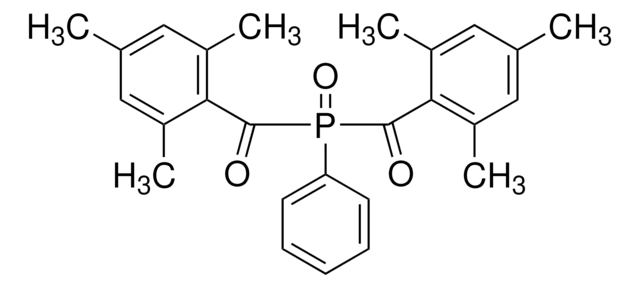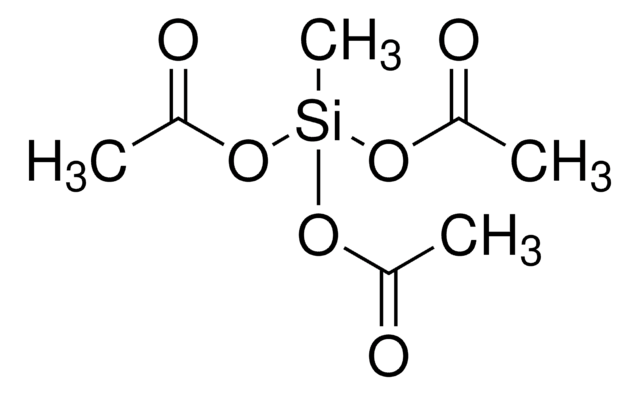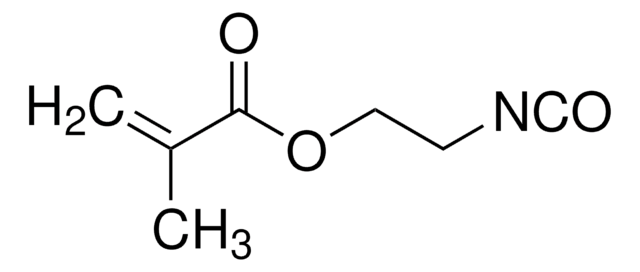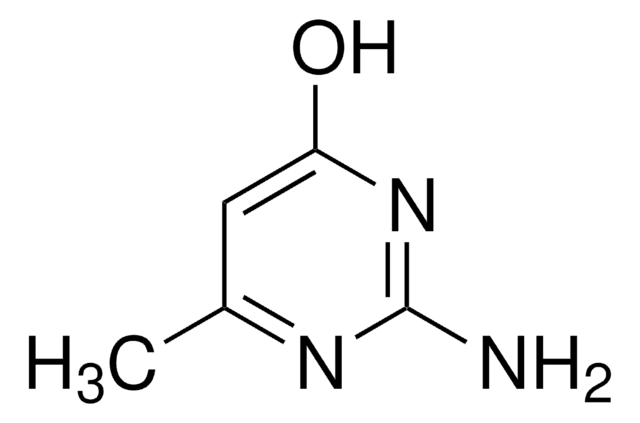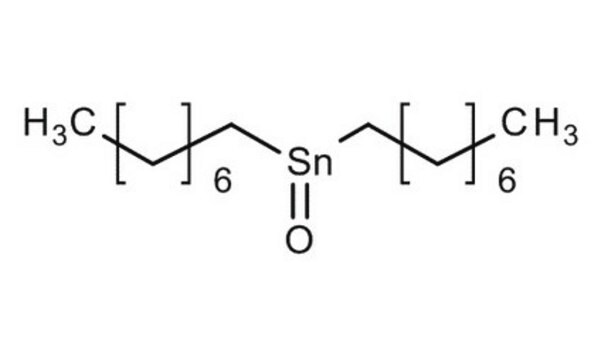291234
Dibutyltin dilaurate
95%
Sinónimos:
DBTDL
About This Item
Productos recomendados
presión de vapor
0.2 mmHg ( 160 °C)
Nivel de calidad
Ensayo
95%
índice de refracción
n20/D 1.471 (lit.)
densidad
1.066 g/mL at 25 °C (lit.)
cadena SMILES
CCCCCCCCCCCC(=O)O[Sn](CCCC)(CCCC)OC(=O)CCCCCCCCCCC
InChI
1S/2C12H24O2.2C4H9.Sn/c2*1-2-3-4-5-6-7-8-9-10-11-12(13)14;2*1-3-4-2;/h2*2-11H2,1H3,(H,13,14);2*1,3-4H2,2H3;/q;;;;+2/p-2
Clave InChI
UKLDJPRMSDWDSL-UHFFFAOYSA-L
¿Está buscando productos similares? Visita Guía de comparación de productos
Categorías relacionadas
Descripción general
Aplicación
- The synthesis of polyurethane (PU) and polyhydroxyurethane (PHU) prepolymers and lignin urethane.
- A protocol for the covalent attachment of poly(ethylene glycol) (PEG) to silicon oxide to form a hydrophilic non-fouling surface.
- Preparation of polymers by reacting hydroxyl-terminated macromonomers and aliphatic diisocyanates.
Palabra de señalización
Danger
Frases de peligro
Consejos de prudencia
Clasificaciones de peligro
Aquatic Acute 1 - Aquatic Chronic 1 - Eye Irrit. 2 - Muta. 2 - Repr. 1B - Skin Sens. 1 - STOT RE 1 - STOT SE 1
Órganos de actuación
thymus, thymus,Immune system
Código de clase de almacenamiento
6.1C - Combustible acute toxic Cat.3 / toxic compounds or compounds which causing chronic effects
Clase de riesgo para el agua (WGK)
WGK 3
Punto de inflamabilidad (°F)
372.2 - 379.4 °F - closed cup
Punto de inflamabilidad (°C)
189 - 193 °C - closed cup
Equipo de protección personal
Eyeshields, Faceshields, Gloves, type ABEK (EN14387) respirator filter
Listados normativos
Los listados normativos se proporcionan para los productos químicos principalmente. Para los productos no químicos sólo se puede proporcionar información limitada. Si no hay ninguna entrada, significa que ninguno de los componentes está en la lista. Es obligación del usuario garantizar el uso seguro y legal del producto.
EU REACH Annex XVII (Restriction List)
Elija entre una de las versiones más recientes:
¿Ya tiene este producto?
Encuentre la documentación para los productos que ha comprado recientemente en la Biblioteca de documentos.
Los clientes también vieron
Global Trade Item Number
| Número de referencia del producto (SKU) | GTIN |
|---|---|
| 291234-100G | 4061838252876 |
| 291234-5G | 4061826574232 |
| 291234-25G | 4061826572146 |
| 291234-2KG | 4061838126344 |
| 291234-500G | 4061838252883 |
Nuestro equipo de científicos tiene experiencia en todas las áreas de investigación: Ciencias de la vida, Ciencia de los materiales, Síntesis química, Cromatografía, Analítica y muchas otras.
Póngase en contacto con el Servicio técnico